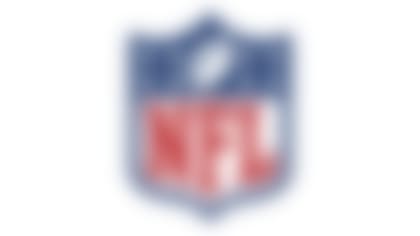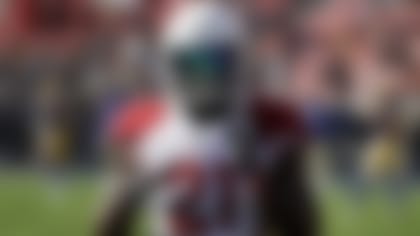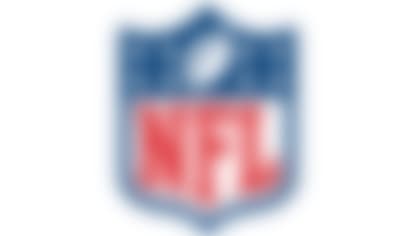Injury data for the 2017 season released by the NFL on Friday showed a season-over-season increase in concussions suffered by players amid a rise in self-reporting of symptoms.
Data compiled by IQVIA, an independent third party retained by the league, showed a 13.5 percent increase in diagnosed concussions from 2016 to 2017 (243 to 281) over the preseason and regular season. The increase comes after 28 percent of concussion evaluations came following self-reported by players -- a nine-point increase over last year. Nearly half (47 percent) of all concussions included some self-reporting component when being flagged by team doctors and independent neurological specialists.
"We're disappointed that the concussion numbers are up," said Dr. Allen Sills, the NFL's chief medical officer, on a conference call with reporters. "It is something which challenges us now to roll up our sleeves and work hard to see that number go down. ... We're not going to be satisfied until we drive that number much lower."
A significant amount of the increase in concussions came during preseason practices (26 in 2016 to 45 in 2017). Jeff Miller, NFL executive vice president of health and safety initiatives, said determining the increase in preseason practices will be a "point of emphasis for us" for the league's Health and Safety Advisory Committee.
"Obviously that draws our attention after a couple years where those preseason practice concussions decreased," Miller said. "So this is an important aspect of the work we will be doing between now and the [scouting] combine."
In addition, the data set showed a year-over-year increase in the amount of injuries reported during Thursday night games. An average of 6.9 injuries were reported during Thursday games -- a 1.6 increase over last season. The 6.9 mark also was higher than the 6.3 reported per game during Sunday and Monday contests in 2017.
"The injury rate is certainly one important metric to track, but it doesn't tell the complete story," Sills said. "And it's a point of emphasis for us. It's something that we want to continue to take a very deep dive into, meaning that we're going to look at all of these other data factors and try to get a more complete understanding of that question because we know it's important to the players, also important to the medical staffs, coaches and all of us.
"But I think it would be somewhat naive and superficial for us to say because the number went up or down that Thursday night is safer or more dangerous."
Data on ACL and MCL injuries remained similar to recent seasons.
In December, the NFL and NFL Players Association instituted a series of modifications to the league's concussion protocol in order to better protect players. The improvements include:
» Implementation of a pilot program utilizing a centralized UNC based at the league office to monitor the broadcast feeds of all games. The UNC will contact the team medical staff on the sideline should they observe any signs or symptoms warranting further evaluation.
» Defined impact seizure and fencing responses as independent signs of potential loss of consciousness, representing "No-Go" criteria under the current Protocol. Players who display either of these signs at any time shall be removed from play and may not return to the game.
» Requiring locker room concussion evaluation for all players demonstrating gross or sustained vertical instability (e.g., stumbling or falling to the ground when trying to stand).
» Officials, teammates, and coaching staffs have been instructed to take an injured player directly to a member of the medical team for appropriate evaluation, including a concussion assessment, if warranted.
» Requiring all players who undergo any concussion evaluation on game day to have a follow-up evaluation conducted the following day by a member of the medical staff.
» A third UNC to all playoff games and the Super Bowl to serve as a backup who can step in immediately should one of the original two UNCs be absent from the sideline for a time to attend to a more severely injured player.
The NFL has made 47 rule changes since 2002 to protect players, improve practice methods, better educate players and personnel on concussions and strengthen the league's medical protocols. The NFL deploys 29 medical professionals on the sidelines for each game. Working with the NFL Players Association, the league enforces a concussion protocol for players that has been instrumental in immediately identifying and diagnosing concussions and other head-related injuries.











